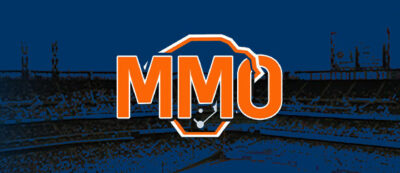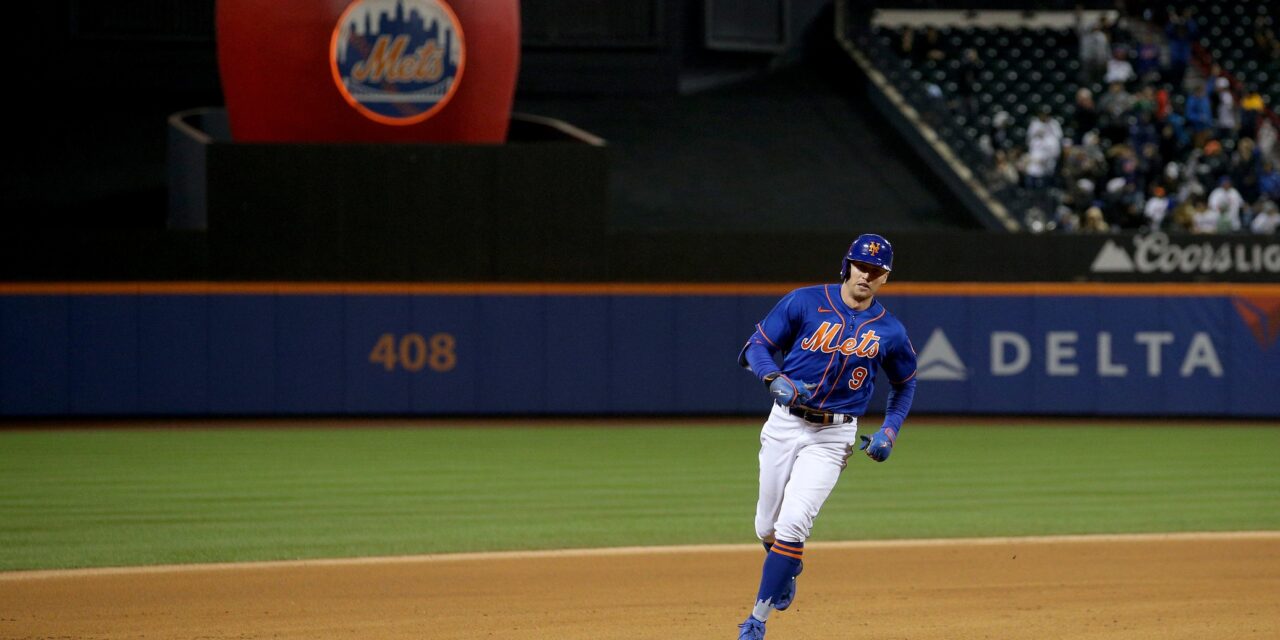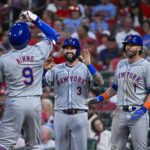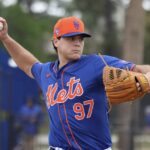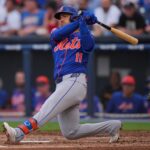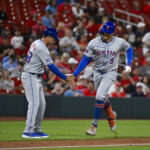Brandon Nimmo was in the midst of a 0-for-21 stretch when he went to the plate in the bottom of the third inning on Monday night. With no score yet and facing the hard-throwing Jon Gray, Nimmo ended his hitless stretch in fashion, clubbing a two-run homer to put the Mets ahead.
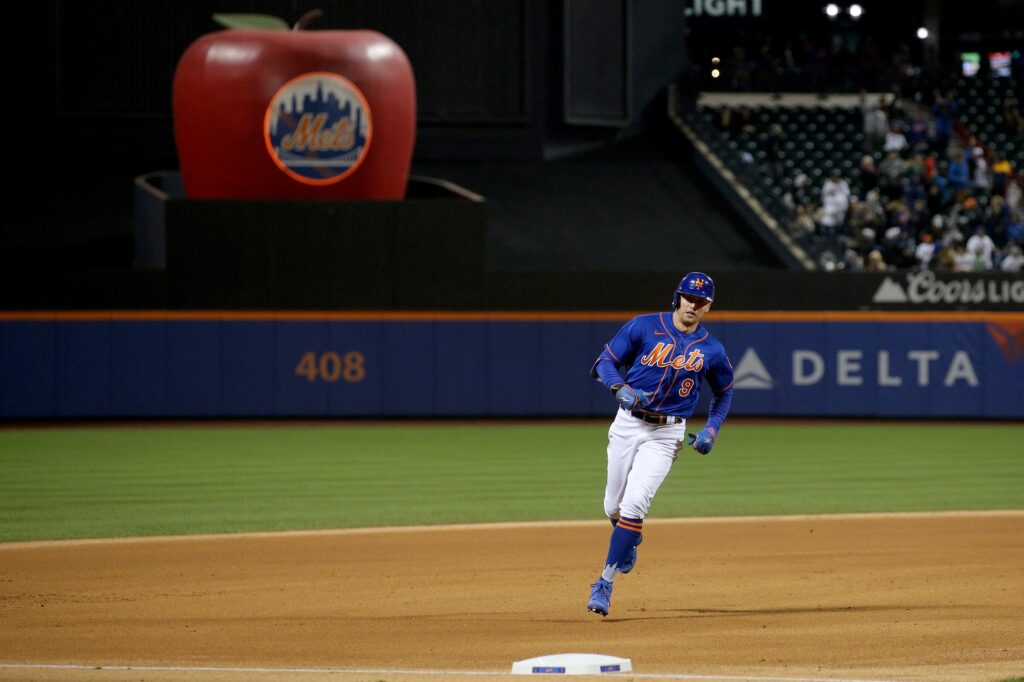
Nimmo has tapped into power this season. He has a career-high 19 home runs and is chasing the 20 mark for the first time at 30 years old.
“He’s changed his approach at the plate,” Steve Gelbs reported during Monday’s game against the Rangers. “(He’s) trying to hit for more power, and it’s come at the cost of a little on-base percentage and a little average.”
As Gelbs mentioned, Nimmo has sold a little bit of both average and on-base percentage to get in the home run column. His batting average of .259 is lower than his combined .281 average over the last three years, but the real hit has been to his on-base percentage.
Nimmo currently holds a .356 OBP, and while still respectable, it is well below his mark of .400 that he recorded in 2021, 2020, and 2018. The Mets are used to seeing Nimmo in the top ten leaders for OBP at the end of the MLB season, but he is currently ranked 30th among his peers.
“As the pitching has gotten better and better every year,” Nimmo told Gelbs. “It is much more difficult to spoil pitches and work walks with deep counts because the stuff is just so wipeout.”
Nimmo’s new approach this season has certainly led to louder contact. His average exit velocity this season is 91.4 miles per hour, up from 89.4 in 2022. The harder contact has also naturally increased his barrel percentage, which has gone from the 44th percentile to the 59th percentile in one year.
Meanwhile, despite a lower on-base percentage and more power, Nimmo is still on pace to replicate his walk (71) and runs scored (102) totals from last season. He currently has walked 65 times and scored 72 runs, keeping his status as an elite leadoff man. (His walk rate is similar, too
Brandon Nimmo launches his 19th homer of the year to give the #Mets a 2-0 lead!
pic.twitter.com/zeGX2IS7xU— Metsmerized Online (@Metsmerized) August 28, 2023
But Is This Better For Nimmo?
Now that Nimmo is hitting the ball harder on average and clubbing more home runs than ever, it’s important to answer the acknowledge the elephant in the room. Has it worked for him? And are these changes beneficial to the team?
For starters, higher exit velocity and more home runs often correlates with a better season than the last, but Nimmo hasn’t really been better—or worse—this year. His .791 OPS is right around .800 OPS from the season before, and despite more home runs, Nimmo’s slugging percentage is only two points higher (.435) from last season (.433).
The marginal increase in slugging percentage is due to Nimmo’s decrease in other extra-base hits. Last season, Nimmo recorded 30 doubles and led the league with 7 triples. This year, Nimmo has 20 doubles and four triples through 126 games.
Sure, he still has time to build upon these numbers, but with his power-first approach at the expense of contact, it might not happen. The evidence lies in his fly ball rate, which has increased from 20.6% to 26.1% in one year.
With the new power and fly-ball rate, Nimmo has hit three more home runs already than in 2022 but isn’t on pace to shatter any team stats. As mentioned before, his walks and runs scored numbers are basically the same, plus his RBI total of 53 is on pace to match his 64 runs driven in from 2022.
After looking at traditional and advanced statistics, the conclusion is simple: Not much has changed. Nimmo’s power and hard contact have replaced his on-base percentage and contact approach, leading to identical counting stats. His wRC+ has dipped slightly, but he’s still 22% better than other center fielders in the league at his 2023 mark. The changes have worked for Nimmo, as he hits more home runs than ever and the ball on average harder, but whether or not it is better for the team is harder to calculate.
Nimmo’s change in 2023 is similar to what Jeff McNeil experienced during the 2019 season. In the first half of 2019, McNeil hit only seven home runs but recorded a .918 OPS. In the second half, he lifted the ball more and hit 16 home runs, but actually had a lower OPS (.915).
The change doesn’t really move heaven and earth for Nimmo. He holds a similar OPS and has been one of the few productive Mets in this lost season. While he sold out for power, Nimmo still leads the Mets with a .356 OBP, and his average isn’t ludicrously lower. Plus, as Nimmo told Gelbs, the pitching is more elite than when he entered the league in 2016. If this is the new status quo for Nimmo, that is more than okay. It just means more apples at Citi Field.
